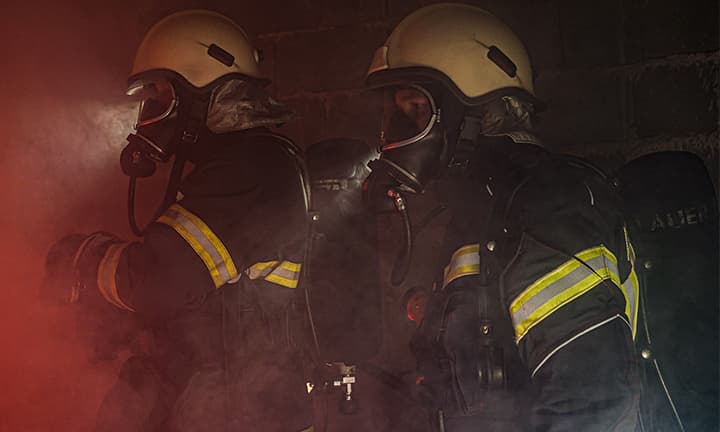Some tips for facing the winter season by bike
Temperatures are dropping, the roads are getting slippery and it's getting darker and darker. We will show you how to face the winter season safely by bike.
Cycling in the fall and winter requires the utmost care and experience. Narrow paths are strewn with wet dead leaves, level crossings with slippery rubber surfaces, bottlenecks offering little visibility, where it is not uncommon for a cyclist to suddenly appear in the wrong direction: everyday cyclists are familiar with treacherous places on their journey. And those on e-bikes face the same challenges as those on traditional bikes, except that they tend to be faster. This is why it is important to be well prepared and to equip your bike well before winter.
Protect yourself from the cold by adopting the onion technique
In this season, no bike without warm clothes. Experienced cyclists know, however, that dressing too warm can quickly sweat on long or hilly journeys, which in turn leads to rapid heat loss. This is why it is crucial to choose the right outfit, which can only be acquired with a little experience. It's about adopting the onion technique, which consists of layering functional underwear, an insulating layer, and, finally, protection against the elements, to be able to face all weather conditions. Moreover, the bumpers mounted on the electric bicycle protect against splashes and avoid soiling your clothes.
Keep the battery warm
Batteries must also be kept warm to allow the optimum efficiency of their electrochemical process. It is recommended to cover them with a neoprene cover on very cold days, to avoid a rapid loss of their operating temperature. Once you arrive at your destination, it is best to take the battery inside. The exposed bollards must then be protected from rain and snow by specially designed elastic neoprene caps.
Make yourself visible
Make yourself visible! Persistent rain and early darkness are a challenge for all road users. It is therefore all the more important to be visible to others, especially in cities, where traffic is heavy. It is recommended that cyclists wear a safety vest or clothing with reflective tapes. Reflectors installed on the e-bike itself can also increase visibility. The safety vest is practical in that it can be put on and taken off quickly, increases visibility, and does not force the rider to change their outfit completely and ruin their look.
Turn on your headlights
Bicycle lighting is perhaps the most important element in increasing visibility and therefore one's own safety in road traffic. Because lighting in good working order not only allows the cyclist to see better, but also to be seen better by other road users. Modern e-bikes offer a powerful lighting system, equipped with daytime running, brake, high beam, and low beam lights. Old-fashioned dynamos, which are driven by spokes, are to be avoided. They tend to go wrong quickly and no longer produce current. Better to opt for dynamos integrated into the hub of the wheel. They are discreet and require virtually no maintenance. Another option is to attach additional headlights to the handlebars and saddle.
Adhere to the road
In the fall and winter, the risk of a flat tire tends to be higher. At dusk and in the dark, shards or other objects that could puncture a tire are often seen too late. In this case, puncture-proof tires can be a solution. Also, the tires must be sufficiently inflated to ensure optimum grip. For ordinary tires, it is generally advisable to have a pressure close to the maximum value indicated on the edge of the tire. On the other hand, on slippery roads, you can slightly deflate your tires. This provides better road grip and therefore better tire traction. However, the pressure must never be lower than the minimum value, also indicated on the edge of the tire. It is also necessary to check the tire pressure, even when the bicycle has not been used for a long time. A flat tire can cause cracks to form.
Check the brakes
The brakes of a bicycle must be in perfect working order in all seasons. Pads and rims should be replaced immediately if worn. Markings indicating their degree of wear are located on the shoes and spokes. However, it is preferable to have the brakes checked by a specialist, who will at the same time carry out a complete check before winter.
Winter break
Those who prefer to forgo the use of their electric bike during the winter period should store it in the right place, in a sheltered and dry place, ideally in an entrance hall or in the cellar. It is necessary to think about its storage as soon as you buy an electric bike because carrying a 30-kilogram bike to take it down to the cellar in a narrow staircase is not an easy task. An alternative for electric bikes that need to be outdoors for a long time is to cover them with a waterproof protective cover. To limit the risk of theft and humidity problems, it is possible to opt for the high-end alternative to the protective cover: the permanent bicycle box, weatherproof, and lockable. In any case, the e-bike battery must be stored inside the house. If not used for a long time and to avoid damage, it is recommended to store the battery charged at 50-80% at room temperature. For storage periods of three months or more, it is recommended to recharge it.




